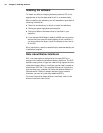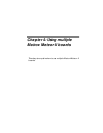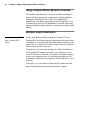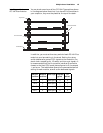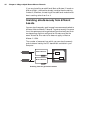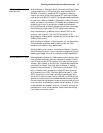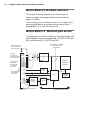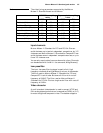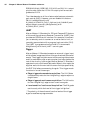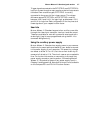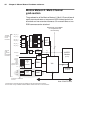
Grabbing simultaneously from different boards 51
PCI bandwidth
requirements
Matrox Meteor-II /Standard, /Multi-Channel, and /Digital have
a low susceptibility to PCI bus latency due to 4 Mbytes of
SGRAM. In addition, sustained PCI-transfers to memory
require the use of a high performance PCI core-logic chipset,
such as the Intel 440LX or 440BX. If a high performance chipset
is used with a Matrox Meteor-II /Standard or /Multi-Channel
board, you should not have any PCI bandwidth problems when
grabbing up to two full-sized color images simultaneously
(using two boards). However, grabbing more than two images
simultaneously might result in PCI bandwidth problems.
As a reference point, grabbing one full-sized NTSC or PAL
image in real time will require a PCI bandwidth of 35
Mbytes/sec or 42 Mbytes/sec, respectively, when transferring in
RGBX (32-bit) mode.
With the Matrox Meteor-II /Digital board, you can experience
PCI bandwidth problems when grabbing from multiple
cameras that require a high bandwidth.
When grabbing from three or more Matrox Meteor-II boards
simultaneously, you will have to reduce the image size to avoid
reaching the upper limits of the overall available bandwidth.
Matrox Meteor-II /1394 Although Matrox Meteor-II /1394 supports simultaneous input
from multiple cameras, there are issues with respect to both
the PCI bus and the IEEE 1394 bus that restricts the actual
number. With respect to the PCI bus, the available sustained
bandwidth is a factor, like other Matrox Meteor-II boards.
However, Matrox Meteor-II /1394 has a much smaller FIFO,
and is therefore more susceptible to long PCI bus latencies.
With respect to the IEEE 1394 bus, Matrox Meteor-II /1394
OHCI-Lynx PCI-to-1394 Host controller is compatible with
serial IEEE 1394 bus data rates of 100, 200, or 400 Mbits per
second, and these rates are shared across the three input ports.
Once a time slice is allocated, the device is guaranteed to have
that time slice, and therefore transfer data; however, the time
slices available will pose a limitation. In smaller systems, for
example with two or three cameras, there should be enough
time slices to handle the load.






